- Administrator
- Albums and Singles
 This Brooklyn-based composer's debut release for Students of Decay is quite an unusual effort, placing its emphasis most prominently on frequently untreated field recordings of natural spaces (as well as a few unnatural ones).  Even the instrumentation is atypical, as Guthrie uses violoncello and contrabass to weave a creaking, moaning bed beneath French horn playing that frequently sounds like a very large, very sad bird.  There is seemingly not much happening compositionally (overtly, anyway), but Codiaeum Variegatum's languorous, organic, and unfamiliar soundscapes are a lovely place to linger nonetheless.
This Brooklyn-based composer's debut release for Students of Decay is quite an unusual effort, placing its emphasis most prominently on frequently untreated field recordings of natural spaces (as well as a few unnatural ones).  Even the instrumentation is atypical, as Guthrie uses violoncello and contrabass to weave a creaking, moaning bed beneath French horn playing that frequently sounds like a very large, very sad bird.  There is seemingly not much happening compositionally (overtly, anyway), but Codiaeum Variegatum's languorous, organic, and unfamiliar soundscapes are a lovely place to linger nonetheless.
This album takes its name from the croton, a plant type with seemingly infinite leaf forms (and a very enthusiastic following).  In fact, it is probably safe to assume that Guthrie used crotons as the thematic basis for the album's content as well, as each of the six songs is titled with a descriptive phrase that could be used to describe a plant and all seem like (increasingly divergent) variations on a theme.  The opening "Branching Low and Spreading" nicely covers just about everything that Guthrie has to offer on Variegatum: deep, groaning string drones; quavering, animal-like French horn moans; and a backdrop of happily chirping birds near a river or waterfall.
The rest of the album does not initially depart very far from that pleasing template, which is perfectly fine–it just means that Codiaeum feels more like a single ebbing and flowing piece that grows increasingly strange rather than six discrete ones.  Things take a deceptively long time to go off the rails though, as "Strongly Leaning with Irregular Crown" only enhances its droning strings with an unexpected passage of bowed arpeggios and a very spirited squawking solo by a bird who is clearly trying to make the most of his big break.  "Unlike More Slender and Graceful," on the other hand, sounds like a negative image of the previous pieces, as Guthrie's strings sound distant, hollow, and vaguely metallic.  "Long Pendulous" is then even stranger still, sounding like Anne is playing strangled, moaning French horn in a sewer beneath a city, accompanied only by a chorus of angry tea kettles or a swarm of mutant crickets.
The proceedings continue to occupy very strange territory with the album's longest and arguably best piece, "Rough Above with Uneven Base," as Guthrie unleashes a wonderfully dissonant and undulating bed of hazy drones and horn swells.  I suspect the wobbly, "falling apart" feel of the drones is due to some sort of tape manipulation, but most of the piece is able to sustain the bizarre illusion that it is an untreated underwater field recording of a bunch of melancholy whales lamenting their lot in some foggy, secluded cove.  "Persists into Winter" then closes the album with a radical change in ambiance, dispensing with music almost entirely to approximate a very lo-fi reverb-heavy recording from the depths of a subway tunnel.  Guthrie occasionally bows a string or two, but the piece definitely seems most focused upon providing an unusual sense of place.
"Winter" is admittedly a somewhat weak note to end the album on, but a lot of Guthrie's charm lies in the album's lazily, meandering "aural travelogue" feel and in her restraint, so it is not exactly a wrong note.  The rest of Codiaeum Variegatum's appeal, for me anyway, is mostly due to the natural flow of the early pieces and their relative guilelessness.  In fact, a small part of me was actually disappointed that Anne took the album into increasingly experimental and subterranean places after its strong, but comparatively static, opening.  Ultimately, however, I liked this album quite a bit.  I certainly have not heard much else that sounds like this and Guthrie's confidence in throwing herself wholeheartedly into something so unconventionally musical is impressive, as is her complete avoidance of any clichés or current experimental music trends.  Codiaeum is a refreshingly understated, small-scale gem.
 
Read More
- Administrator
- Albums and Singles
Pre-Release of the Double Vinyl album Parade by Nurse With Wound and Graham Bowers.
ART EDITION
This pre-release is limited to 18 copies and is a special ART EDITION of the double vinyl album of Parade.
Each album contains a totally superb, unique, original artwork by Steven Stapleton aka Babs Santini, all specifically created for this art edition, numbered and signed by Steven.
The Red Wharf website currently has photographs of three of the artworks, illustrating the quality of Steven's artwork, all are mounted on the reverse face of a 8.26" x 8.26" (210mm x 210mm) full colour folded Art Print, and each one is individually signed and numbered by Steven and Graham and is enclosed in a special presentation envelope.
LIMITED EDITION
This pre-release is a LIMITED EDITION of 185, each containing a 8.26" x 8.26" (210mm x 210mm) full colour folded Art Print.
Each one individually brush-marked by Steven and numbered and signed by Steven and Graham.
.
Please visit the Red Wharf Shop for further details www.red-wharf.com/shop.htm
The format and track list of the double album is as follows:
Side One:
OFF TO HELL ON A HANDCART
APES AND PEACOCKS
BELLS OF HELL GO TING A'LING A'LING
Side Two:
RING A'RING O'ROSES
A TISSUE OF DECEIT
Side Three:
RATS, CATS AND DOGS
BEYOND THE PALISADE
THE BITTER END
Side Four:
DIPLOID (PARADE ~ EPILOGUE)
--------------------------
UPDATE
Release of the double vinyl album Parade by Nurse With Wound and Graham Bowers.
The ART EDITION of 18 have all been sold.
LIMITED EDITION
A LIMITED EDITION of 185, each containing a 8.26" x 8.26" (210mm x 210mm) full colour folded Art Print.
Each one individually brush-marked by Steven and numbered and signed by Steven and Graham.
These are now available at the Red Wharf Shop for further details http://www.red-wharf.com/shop.htm
Read More
- Administrator
- Albums and Singles
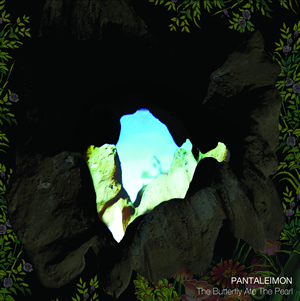
Andria Degens' first record in five years as Pantaleimon coasts along in a haunting lull, halfway between coherence and a nonsensical haze. A luxury of psychedelic drone and lush orchestration, the narcotic quality of this record is endearing even if it is not fully satisfying. I return often to a few beautifully performed songs buried among a number of other simply competent ones, but I have to admire how engrossing Degens' style is when absorbed at an album's dose.
The Butterfly Ate The Pearl has an impressive cast of contributors on board with Andria, ranging from Steve Finnerty (of Alabama 3) and Jay Darlington (of Oasis and Kula Shaker) to James Blackshaw and even Will Oldham. But honestly, their input is totally backgrounded by Degens' dominating voice. The sole element tethering this music to the conscious world, the lyrics of Pantaleimon are fluid and lush without seeming forced. Scarcely rhyming, Andria's poetic prose is uplifting by a bevy of strings and treated guitars and synthesizers and plentiful reverb. In the better points of the album, such as on early standouts "Diamond River Run" and the title track, there is a timeless comfort to how her voice dances around the pacing of the songs, in a way indebted to alternative rock with its distant blasé and listless delivery.
She is irreverent, perhaps; psychedelia is difficult to deliver with sincerity and I get the feeling Andria has found a safe middle ground to attempt proselytizing for the natural world or to share deep secrets while avoiding the traps of overly earnest purple prose. On the most upbeat song of the album, "Elevation of a Dream," Degens approaches something very familiar to fans of great dream pop, a rattling ride cymbal and a synth buzzing along in a two-part movement of repeated passages and little golden moments. It is the finest moment on the album, a tender crushing refrain of "we are starlight" fading out in unaccompanied sadness. It is succeeded by "Ember," its psuedo-religious organ trills, sparse choral accompaniments and sturdy percussion embodying the confidence of the album's lead single.
The energy tapers off a bit at that point, concluding in a fairly underwhelming two song suite to end it all. "Morning Star" and "Summer Reigns" both aim for a kind of miraculous summation of moods and timbres that are not fully realized but are still fairly pleasant. The album is slow in peak and comedown, with a stellar middle, a feat which in my mind seems rare. Pantaleimon never attempts to make much of an impression with her music through its soft strokes and gently ethereal tones. Still, it is at times impactful; at times stunningly so.
Samples:
 
Read More
- Administrator
- Albums and Singles
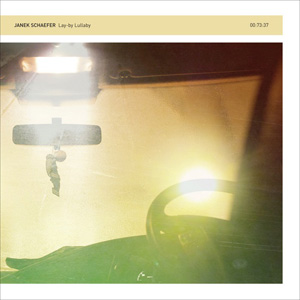 Lay-by Lullaby is at its core a companion piece to Schaefer's installation work Asleep at the Wheel, which functioned as a call to social awareness that can be lost through the constant movement of modern life symbolized by the repetitive act of automobile travel. This album, however, emphasizes the opposite sensibility. It results in a muted, almost hallucinogenic series of calm compositions that revel in the repetition.
Lay-by Lullaby is at its core a companion piece to Schaefer's installation work Asleep at the Wheel, which functioned as a call to social awareness that can be lost through the constant movement of modern life symbolized by the repetitive act of automobile travel. This album, however, emphasizes the opposite sensibility. It results in a muted, almost hallucinogenic series of calm compositions that revel in the repetition.
This lengthy album trades mostly in sparse, pensive tones and light, crackling passages of static and blurred radio transmissions. "Radio 101 FM" and "Radio 102 FM," for example, stick with bare arrangements of expansive tones mixed up with the occasional sound of a passing motor vehicle. The latter has a simple two-note progression that makes for a slightly more melodic, musical feel throughout.
On "Radio 105 FM" and "Radio 106 FM," Schaefer employs some excellent crackling static that does an exceptional job of replicating the sound of tires on asphalt, and both pieces strip the overall mix down to an infrequent, low register tone as opposed to the album’s other, more relaxed elements. The automobile symbolism also appears distinctively on "Radio 111 FM," where the analog electronics hum away like an idling car engine.
Other pieces focus much more on the conventional, electronic parts of Schaefer's art."Radio 103 FM" has a more conventional synthesizer sound, and one with a 1980s digital keyboard sheen to it."Radio 110 FM" features effective string-like electronic flourishes that open it in a more clearly dramatic fashion, although the closing minutes are more meditative textures than film-score intensity.
Mixed in with the light tones and melodies is a collection of field recordings taken from London's M3 motorway, the occasional revving engine or passing vehicle making for a slightly jarring interruption that adds dynamics, but does not at all distract from the sound as a whole.
This fits with the disc's aesthetic perfectly: Schaefer's gentle gliding melodies and hushed bits of static emulating the hypnotic feel of late night driving with the only illumination coming from an occasional street light or the moon in the night's sky.Just as things become too peaceful, a passing vehicle shakes the driver awake to begin the cycle once again.
It is this interjection of the motorway recordings that gives Lay-by Lullaby its distinct personality.That is not to say that Janek Schaefer's ambient electronic work is not effective on its own, quite the contrary.His tastefully understated melodies and textures are brilliant on their own.But here, the way they mimic the hypnotizing repetition of night driving with the interrupting recordings of passing cars is what makes this a brilliantly effective album.
samples:
 
Read More
- Administrator
- Albums and Singles
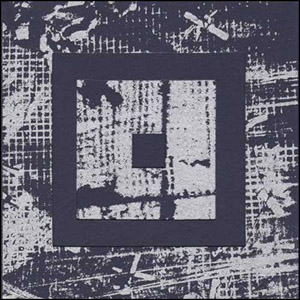 Pierre Jolivet (Pacific 231) and Philippe Blanchard (Lieutenant Caramel) have both been active in experimental music since the mid 1980s, and this is not their first collaboration. However, Aunt Sally is one of those albums that, even after sitting with it for a while and a number of repeated listenings, I still have mixed feelings about. Some moments come across as brilliantly absurdist pairings of cut up music and junk noise. Then there are moments that feel simply like random bits of sound slapped together haphazardly, justifying hat often leveled complaint against this sort of challenging art.
Pierre Jolivet (Pacific 231) and Philippe Blanchard (Lieutenant Caramel) have both been active in experimental music since the mid 1980s, and this is not their first collaboration. However, Aunt Sally is one of those albums that, even after sitting with it for a while and a number of repeated listenings, I still have mixed feelings about. Some moments come across as brilliantly absurdist pairings of cut up music and junk noise. Then there are moments that feel simply like random bits of sound slapped together haphazardly, justifying hat often leveled complaint against this sort of challenging art.
The pieces that open and close the album are the most impressive, largely because both are live performances.Album opener "Yellow House in Beirut," recorded in Lebanon in 2012, mixes in some French spoken word pieces with dissonant noises and fragmented sounds into a chaotic, clattering mass."L'Autre Massacre," a performance from Dublin in 2011, is a bit harsher with violent stabs and outbursts of sonic junk amidst a world of echoes and sound fragments.
Between these performances are a series of studio recordings that, due to the fact they were subject to overdubs and replications, often seem too unfocused and random for their own good.The low frequency rumble and guitar feedback of "Bagliore" helps it to stand out, but the overuse of random cut-up bits end up seeming more like filler than anything with deliberate artistic intent.
"Angela Palnep Chu" features a selection of sampled musical elements that are identifiable within the chaos, but with the heavy processing it becomes hard to fully discern.Mixed in with the other messy detritus and spoken word, it has a sense feel to it, but also drifts into directionless knob twiddling that drones on for a bit too long.The looped, violent sounds and harsh outbursts of "Birolo" also are a plus, but within the vacuum cleaner din of white noise, its power is somewhat diluted.
There are some captivating moments to be heard on Aunt Sally, and these moments are what motivated me to return to this album on multiple occasions.The problem is that between these high points are passages that seem directionless and too random, and I caught my attention drifting away from the album.There are some excellent segments of this album interspersed throughout.Without the editing though, the disc just sounds bloated and, like an overly long film, it diminishes the impact of the highlights.
samples:
 
Read More
- Administrator
- Albums and Singles
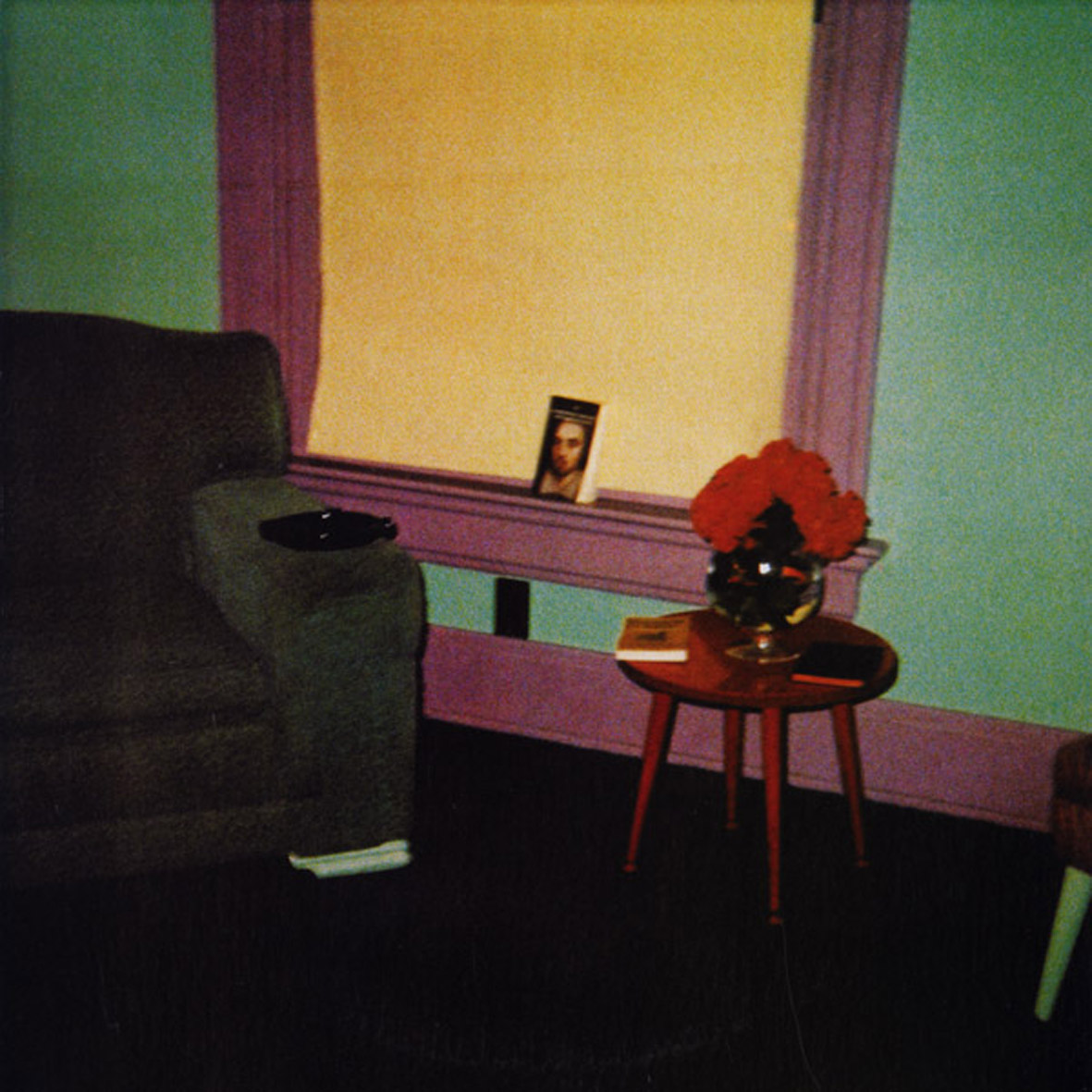 Originally attributed to The Units, this cryptic, haunting, and otherworldly 1978 debut is the album that began over three decades of myth, legend, and speculation regarding the man behind Corwood Industries.  While both the band name and cover art aesthetic proved to be quickly discarded false starts, Sterling Smith's uncompromising musical vision was fully formed from the very beginning...or at least as close to being fully formed as it would ever get.
Originally attributed to The Units, this cryptic, haunting, and otherworldly 1978 debut is the album that began over three decades of myth, legend, and speculation regarding the man behind Corwood Industries.  While both the band name and cover art aesthetic proved to be quickly discarded false starts, Sterling Smith's uncompromising musical vision was fully formed from the very beginning...or at least as close to being fully formed as it would ever get.
I have historically had a somewhat complex relationship with Jandek's music, as I was definitely drawn more to the sheer mystery and otherness of his persona than to the actual songs.  While I excitedly bought Jandek on Corwood as soon as it came out and fell all over myself to frantically buy tickets to see him when he first started playing live, I never actually thought of Jandek's music as "good."  In fact, finally seeing him live was kind of a "the emperor has no clothes" moment for me–I definitely walked away from that gig thinking that Smith was at best a fascinating charlatan.  Despite that, Jandek's music never quite stopped nagging at me and I finally had the revelation a few years ago that I actually liked some of Sterling's songs quite a lot.
My primary stumbling block was, of course, the same one that most people have: Smith seems to be an improbably terrible guitarist.  However, many have made the counter-argument that Sterling is actually a brilliant guitarist, as he has rejected the entirety of Western civilization's accumulated wisdom regarding tuning, harmony, chords, song structure, and rhythm to make music every bit as broken-sounding and disturbed as his vocals.  I have no idea if that was Smith's full intent, but I will concede that his stark, unremittingly dissonant guitar aesthetic was indeed an absolutely visionary idea.  Unfortunately, having a great idea does not necessarily mean that it will be executed with similar brilliance, which Ready For The House bluntly illustrates again and again: the first 8 songs all seem to be played on an out-of-tune/experimentally tuned acoustic guitar without fretting a single note; just a series of variations upon the same jarring open chord.  Sometimes it is plucked, sometimes it is strummed, but it always sounds like the same six notes.
That makes for a spectacularly one-dimensional album, as well as an unintentionally hilarious ending, as Sterling unexpectedly plays some rather spirited barre chords on an amplified electric guitar for the closing "European Jewel (Incomplete)."  Unlike the other songs on the album, it actually sounds like the guitar is in some (slightly off) variation of standard tuning.  This leads me to conclude that Sterling had just bought it and had merrily skipped home with a smile on his face and a song in his heart, then excitedly started recording mere seconds after he got back to the house.  Though it ends on a singularly creepy note (it abruptly stops mid-sentence after Smith sings "there's bugs in my brain, i can't feel any pain, just a shaking shaaaa-"), it is by far the least compelling/unique song on the album (it basically sounds like a mentally ill beat poet fronting a shitty one-man avant-rock band).  Maybe he was onto something with his otherwise categorical refusal to use his left hand at all.  Curiously, "Jewel" is revisited several more times over the next few years for unknown reasons (Sterling either loved it or absolutely hated this particular version, I guess).
Objectively, Ready For The House is a spectacular failure by almost every single criterion by which music is traditionally judged: the guitars are aimlessly strummed and badly out-of-tune, the singing is awkward and tuneless, the lyrics often sound like drug-fueled stream-of-consciousness, the mood is monochromatically forlorn, there is no melodic or harmonic progression, and there is virtually no textural or dynamic variation.  Somehow, however, Smith manages to turn all of those seemingly fatal shortcomings to his benefit, which is a feat that seems far too brilliant to be completely intentional.
With the exception of "European Jewel," every single song on House sounds like the most perfect and direct distillation of the blues imaginable.  Sterling has stripped literally away every bit of artifice, leaving only his chilling, lonely voice projecting his feelings of extreme alienation into the void and his one-handed, one-chord guitar playing adds a layer of obsessiveness that only makes the whole thing more unnerving.  Smith is unquestionably a man who meant exactly what he is sang and wrote these songs because he absolutely needed to–House feels like a hushed, dead-of-night, confession first and an album second.  Also, it helps that some Jandek lyrics are heartbreakingly poetic ("The sky is black in a blue night") or existentially poignant ("I curse the day I found my freedom").  And that sometimes Smith finds a way to make even the simplest lines seem like the most menacing thing he could possibly say, like the repeated "I'm crazy about you" in "They Told Me About You" (my personal favorite).
Jandek, of course, continued to get better and better after this album (for a good long stretch, anyway), but Ready For The House definitely stands as one of the most staggeringly alien debuts in history.  Even though I think "European Jewel" is terrible, I would not change a single thing about this release, as such a wrong-footing, enigmatically truncated curve ball turned out to be absolutely ideal for luring hapless listeners into a lifetime of speculation and (mostly) unsatiated curiosity.  Anyone in search of just a single Jandek album might be better served by a later album like Six And Six or Chair Beside The Window, but I prefer to see Jandek's oeuvre more like a novel: this is quite a gripping opening chapter and the best policy is probably to just keep moving forward sequentially until you either go mad, become completely obsessed, or lose interest (which often occurs with the dawning of Sterling's a capella era).
 
Read More
- Administrator
- Albums and Singles
 In their 21st year, Tindersticks have decided to celebrate with two new albums. Across Six Leap Years, a retrospective of sorts, sees them revisiting older material with their current line up and the other is a radical departure as they soundtrack Les Salauds (another Claire Denis film). The soundtrack is the clear winner here but Across Six Leap Years has its moments too.
In their 21st year, Tindersticks have decided to celebrate with two new albums. Across Six Leap Years, a retrospective of sorts, sees them revisiting older material with their current line up and the other is a radical departure as they soundtrack Les Salauds (another Claire Denis film). The soundtrack is the clear winner here but Across Six Leap Years has its moments too.
When the band announced their plans to go into Abbey Road and re-record selected songs from their back catalog, I had the idea that they would take familiar favorites and reinterpret them in surprising or interesting ways. I tried to imagine what songs they would pick: "City Sickness," "Tiny Tears," "CF FG" and "Bathtime" all seemed like sure choices to me or maybe a couple of songs off each of the early albums? What I did not expect was for two songs from Stuart Staples’ solo album Lucky Dog Recordings 03-04 to kick off the album.
This album never grabbed me at the time; it seemed like a sad echo of Tindersticks who I had presumed to be done at that time. Staples has since stated that some of those songs were written for Tindersticks before they split and that they were never given the home they really needed. However, the group’s rendition of "Friday Night" does little to improve the song which still sounds fairly dead in comparison to Tindersticks even on an off day. I have grim feelings where this is going, especially since I do not remember liking the song "Marseilles Sunshine" much. Yet, I am surprised to find that it is given a new lease of life here. Poised and delicate, this is prime Tindersticks that would be comfortable on an album like Curtains or Simple Pleasure.
From here on, the group picks songs from the main Tindersticks songbook but it is an odd selection to say the least. The first album is ignored though they do include three songs from their second album: "A Night In," "Sleepy Song," and "She’s Gone." Unfortunately, none of the versions here top the originals. Only it is possible to hear the changes in Staples’ voice in the intervening 20 years, these could be alternative takes from the original sessions. The exception is "Sleepy Song," which was also recorded in one take in Abbey Road in 1994 with the band arranged around a single microphone and that version which closes their second album has a magic that cannot be replicated, the new take is a bit lacklustre when listened to after the original. The songs are still good but it seems like a waste of studio time now especially considering there are terrific versions of all these songs available as a free download on the official Tindersticks site (from when they performed the second album for ATP’s Don’t Look Back series of concerts).
What strikes me particularly about Across Six Leap Years is how dreary the track selection is. Occasionally the livelier side of the group comes across but I would hesitate to recommend this album to anyone but the most die hard fan as it is a trudge to listen to. Where are the likes of "Her," "For Those," "Black Smoke" or 'Rented Rooms"? Sure there is a good interpretation of "Say Goodbye to the City" but given that they have been storming through the same song on their recent tour, it sounds like they were holding back and playing it safe here.
samples:
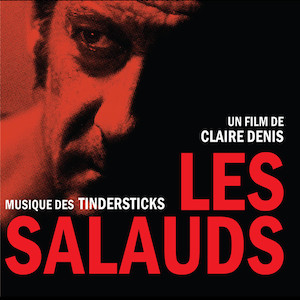
Playing it safe is not something that could be said about Les Salauds. For all the toeing the line that Tindersticks do on Across Six Leap Years, the line is well and truly erased for this soundtrack. Brooding and dark, here the band’s usual style and instruments are traded in for electronic gurgles and treated vocals. This shift would be a real shock if Stuart Staples did not name check Cabaret Voltaire’s "Nag Nag Nag" on the band’s website or if the band had not covered Psychic TV as a B-side a couple of years ago, though even with this information in mind Les Salauds seems to come out of nowhere.
The pitch-black mood is unsurprising given the details on the film’s IMDB page (as usual with my reviews of film soundtracks, I have still to get around to watching Les Salauds): suicide, rape, revenge. Yet, there is a tenderness hear despite the weighty themes of the film. Much like their score to Denis’s excellent but extreme sex cannibal drama Trouble Every Day (by far and away my favourite Tindersticks song, it should have been included on Across Six Leap Years), the group do not just regurgitate the clichés and tropes of genre movie scores. Opening the album, "Put Your Love in Me (Fade)" is immediately striking in its form: a pulsing rhythm and electronic drum beat form a muscular centre for Staples’ voice to weave around. Even the familiar sound of his voice is strange, an echoed effect makes him sound like some sort of androgynous ghost. When he sings "I wanna be in heaven!" it sounds like the mournful cry of a soul trapped in limbo.
"Opening" (perhaps unsurprisingly) introduces the melodic themes that run through the soundtracks; an icy synthesiser playing long and sad tones (think the bleakest parts of Joy Division’s Closer) and minimal but powerful electric piano forcing through the darkness. These two elements—the synth and the piano—re-emerge throughout the album like lone shadows stalking the listener. Despite the simplicity of the pieces, they create whole narrative worlds based on the titles alone. The haunted emptiness of "Elevator" and "Low Life" generate enough atmosphere to have the power of a good short story or evocative photograph (those ones that stick with you for years after you have read or seen them). The fact that a film exists to go with these pieces is incidental, Les Salauds works brilliantly on its own terms.
Les Salauds reaches an intense climax with "Night Drive," where all the elements that make the rest of the album so atmospheric are ramped up to a dizzying peak. I cannot actually conceive of whatever scene it is meant to accompany fully matching the frenetic power of "Night Drive" but I am eager to find out. By the time the track finishes and the second (and much longer) version of "Put Your Love in Me" comes on, the tension has come to the point where instead of being a release, it intensifies the paranoia and unease at the centre of the song. This leap into the depths of emotion and experimentation is a far better celebration of the group’s continued existence than the rehash of old songs presented on Across Six Leap Years and with any luck, Les Salauds is a portent of another 21 years of fantastic music.
samples:
 
Read More
- Administrator
- Albums and Singles
 While there are many fine reasons to love Sublime Frequencies, their latest album highlights a personal favorite: their unwavering willingness to release superficially absurd, financially doomed, or utterly uncategorizable projects solely because they are interesting and unique.  Also, the fact that they are an established label means that something like this (a random-seeming collage of radio snippets recorded almost a decade ago) needs to be treated with considerably more critical thought and openness than it normally would be.  It certainly still sounds like a random collage of radio snippets, mind you, but the intent is deeper and more noble than that.
While there are many fine reasons to love Sublime Frequencies, their latest album highlights a personal favorite: their unwavering willingness to release superficially absurd, financially doomed, or utterly uncategorizable projects solely because they are interesting and unique.  Also, the fact that they are an established label means that something like this (a random-seeming collage of radio snippets recorded almost a decade ago) needs to be treated with considerably more critical thought and openness than it normally would be.  It certainly still sounds like a random collage of radio snippets, mind you, but the intent is deeper and more noble than that.
As it happens, the idea of hanging around in a distant country aimlessly spinning a radio dial to hear what sort of unfamiliar things come out actually sounds quite appealing to me.  If I did it, however, I would never in a million years think of releasing those recordings as an album.  The primary reason for that is simple: literally anyone could have done this, as Hisham Mayet's recordings are deliberately artless.  He was not harvesting strange sounds for some planned surrealist collage nor is this any sort of ethnographic sonic travelogue, unless he was trying to replicate a cab ride with an easily bored driver.  Secondly, I would feel like any Nigériens that I told about the project would look at me like I was an utter fool, while Westerners would probably pillory me for shameless cultural voyeurism ("Check it out–I went somewhere foreign and made a tape of all the foreign people talking all foreign!  Aren't they crazy-sounding?").
Fortunately, Mayet's liner notes do an excellent job of explaining the purpose, context, and content of this release.  Essentially, Radio Niger is a snapshot of what radio should and could be: a vibrant, unpredictable medium that gives a meaningful voice to all kinds of disparate communities and facets of the artistic spectrum.  While there are admittedly a handful of similar bastions remaining in the US (such as WFMU), American terrestrial radio has generally been a joyless, soulless, and irrelevant wasteland of homogeneity for a very long time.  Also, American free-form radio is largely the province of the very hip, whereas Radio Niger is a far more broad-reaching and inclusive phenomenon where many different languages, cultures, and socio-economic strata happily collide.  The sheer scope of content covered on this album is staggering–once I had a more complete idea of what I was hearing, anyway.  There are probably not many other places on earth where "avant-collage cutups" coexist with BBC news broadcasts, disposable Auto-Tuned contemporary pop, Taureg blues, drunken storytellers, Koranic transmissions, and animist folk songs.
Unfortunately, I do not speak fluent Hausa, Zarma, Tamajeq, or even French, which leads to one of Radio Niger's few regrettable, but inherent, flaws: few will understand the actual content of this album, so it unavoidably still sounds like someone scanning through a radio.  Some of the snatches of songs are quite good, certainly, but they are always incomplete and there is seemingly no way to find out anything about them.  My other issue is that–contentwise, at least–this seems like it should be a free or inexpensive download rather than a full-priced CD.  However, releasing this as a context-free sound file would completely defeat its purpose.  Also, treating Radio Niger like a "real album" gives it the sense of significance that it deserves.  My sole real caveat then is this: this is not the place to go for anyone looking to be turned onto some cool Nigérien bands.  It is, however, a thoughtfully assembled love letter to free-form radio that also happens to double as a fun and enjoyable collage
Samples:
 
Read More
- Administrator
- Albums and Singles
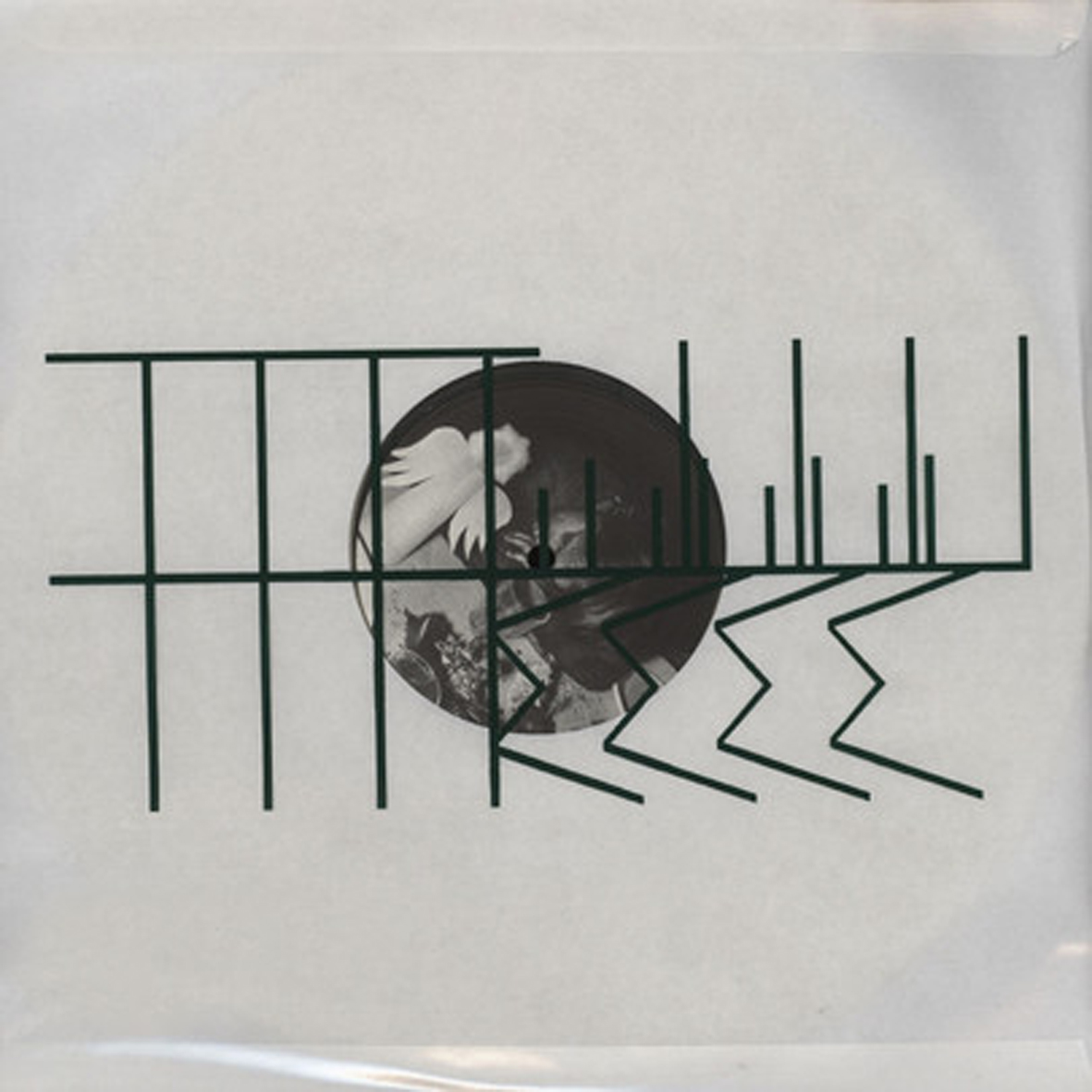 Although I have only been following Luke Younger's career for a few short years, one thing is very clear to me: he definitely does not like to repeat himself.  Curiously, however, that creative restlessness is not channeled into any sort of recognizably linear evolution; rather, each new Helm release seems to be a self-contained experiment or reinvention.  In keeping with that theme, these latest two EPs take divergent paths and succeed in divergent ways, though Silencer is definitely the superior one.
Although I have only been following Luke Younger's career for a few short years, one thing is very clear to me: he definitely does not like to repeat himself.  Curiously, however, that creative restlessness is not channeled into any sort of recognizably linear evolution; rather, each new Helm release seems to be a self-contained experiment or reinvention.  In keeping with that theme, these latest two EPs take divergent paths and succeed in divergent ways, though Silencer is definitely the superior one.
To his credit, Younger is one of the few prominent noise artists who has yet to jump on the techno bandwagon (though there probably is not any room left on it at this point anyway).  Silencer is still an atypically beat-driven effort however–it is just that the rolling, lurching tom-tom beat of the title piece sounds far more indebted to Les Baxter than to anything currently coming out of Bristol or Berlin.  The sizzling blurts, insectoid clicks, electronic squiggles, and grinding metallic shimmer are all very much in the restrained noise/musique concrète vein, but it is easy to picture Luke turning knobs and pressing buttons in the shadow of a volcano while surrounded by tiki torches and a spirited limbo contest.  The closing "The Haze" treads somewhat similar territory, though the groove is a bit more sultry and the noises more in the "giant robotic crickets or an amplified lawn sprinkler" vein.
The remaining two pieces, "Mirrored Palms" and "Bergamo," are quite a bit different.  The superior one is the beatless "Palms," which might secretly be the best piece on the EP, evoking a hallucinatory atmosphere of escalating dread worthy of Angelo Badalamenti's best soundtrack work for David Lynch.  "Bergamo," on the other hand, approximates being trapped in a dripping, slowly flooding cave beneath some giant, pounding machinery.
Even though all of the individual pieces are strong, however, I was left with a nagging feeling of not being quite satisfied.  The reasons for that feel somewhat contradictory and vague, but I think my main problem is that the 10-minute "Silencer" is not quite compelling enough to justify its length, while the EP as a whole is too short and varied to get fully absorbed in.  Regardless, Silencer is probably still a great introduction for anyone new to Younger, as it is atypically rhythmic and distinctive, though I personally get a lot more out of his full-lengths.
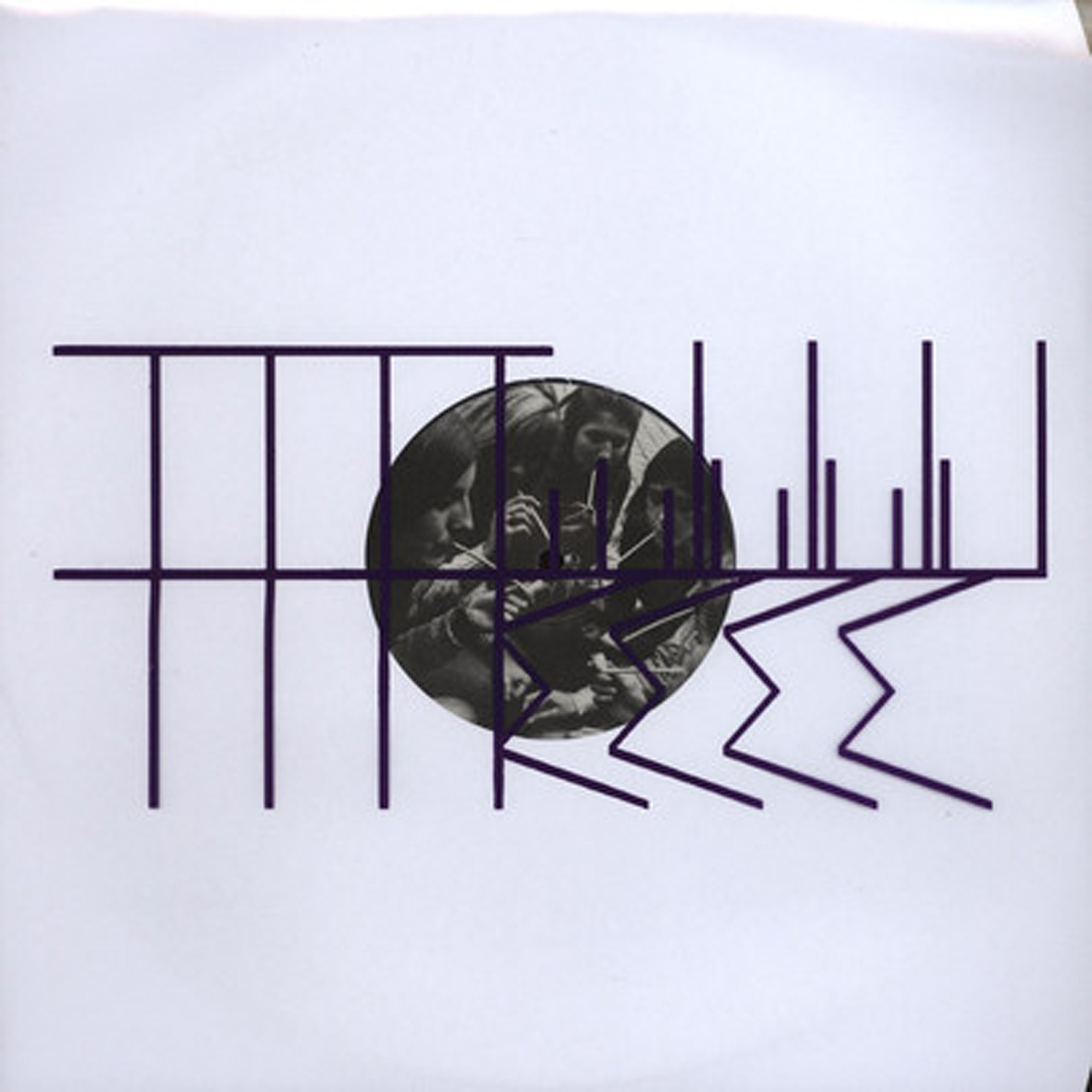
Curiously, The Hollow Organ single/EP does not begin with "The Hollow Organ," nor is the title track unquestionably the stand-out song.  Rather, it opens with a very cool 3-minute piece called "Carrier," which combines a hollow thrum, a buried dancefloor throb, harsh scraping and grinding, and sprays of noise that resemble showers of sparks from a broken power line. Then it abruptly transforms into a coda of subterranean burbling and a wildly panning and quavering animal-like whine.  After that brief and wonderful opening, unfortunately, Younger's inspiration seems to have dissipated a bit.
The remaining three songs are mostly just texture-based soundscapes without any sort of serious melodic/rhythmic activity or significant compositional arc.  They are not bad or anything, but I feel like Luke is basically just treading water for the next 22 minutes.  Each piece certainly sounds vibrant and multilayered though, particularly "Analogues," which gradually drifts from heavy metallic grinding to a deep, forlorn crackle that sounds like the slow burning of an ancient forest.  "Spiteful Jester," on the other hand, is a miasma of distressed and empty-sounding industrial blurts and an unrelenting whine.  The fun then finally winds down with the 10-minute closing title piece, which is a slowly pulsing and ominous bit of menacing ambience that calls to mind an abandoned, windswept shipyard in the dead of night.
I think Luke succeeded at what he was going for with The Hollow Organ, which is mostly some sort of machine noise-damaged dark ambient, a soundtrack for a non-existent film (complete with sinister pipe organ finale), or a suite of nightmarish faux field recordings, but it ultimately did not make a strong impression on me.  That might be attributable to how permanently burned-out I am these days on anything resembling dark ambient though, which is certainly not Younger's fault.  Or it might just be that this EP was too brief for me to get fully immersed in Luke's brooding horror-scape.  Or that I wished the simmering moodiness would eventually erupt in some kind of crescendo, which it never does.  In any case, I am sure that Helm fans looking for a good headphone mini-album full of sharply realized, vibrant, and hallucinatory textures to tide them over until the next album will find that Organ satiates that need nicely.  To my ears, this definitely feels like a fairly minor addition to Younger's oeuvre, but it is admittedly good for what it is.
 
Read More
- Administrator
- Albums and Singles

Artist: Deadwood
Title: Sheolic
Catalogue No: CSR163CD
Barcode: 5060174955396
Format: CD in jewelcase
Genre: Black Industrial / Dark Ambient
Shipping: 17th February
Sample: Compound 4080
Normal 0 false false false MicrosoftInternetExplorer4
st1\:*{behavior:url(#ieooui) } /* Style Definitions */ table.MsoNormalTable {mso-style-name:"Table Normal"; mso-tstyle-rowband-size:0; mso-tstyle-colband-size:0; mso-style-noshow:yes; mso-style-parent:""; mso-padding-alt:0cm 5.4pt 0cm 5.4pt; mso-para-margin:0cm; mso-para-margin-bottom:.0001pt; mso-pagination:widow-orphan; font-size:10.0pt; font-family:"Times New Roman"; mso-ansi-language:#0400; mso-fareast-language:#0400; mso-bidi-language:#0400;}
The desolate new album from Sweden’s Deadwood (aka Daniel Jansson of CULTED). Recorded 2009-2011, “Sheolic” mixes dark ambient with black Industrial and power electronics, making this the bleakest Deadwood album to date. Cold, distorted waves of nefarious electronics, putrescent vocals and dense, heavy rhythms take you to a new sub-level of despair that delivers on many plains of consciousness. Influenced by the downfall of mankind and the men and women that willingly embrace it; from religious cults to those who choose to act on their own. This is the final part of the Deadwood trilogy for Cold Spring – beginning with “8 19″ in 2005, continuing with “Ramblack” in 2008, and finishing with “Sheolic” in 2014. Cover art by Laetitia Mantis.
Tracks: 1. A.V.E / 2. Pulverization Pulse / 3. Compound 4080 / 4. Dead Waste / 5. Traditorem / 6. Dissolution Paradigm / 7. Malum In Se
Read More
- Administrator
- Albums and Singles

Artist: Mesektet
Title: Towards A Bleak Sun
Catalogue No: CSR191CD
Barcode: 5060174956775
Format: CD in jewelcase
Genre: Dark Ambient / Drone / Ritual
Shipping: 17th February
Sample: Hollow Monoliths
Ancient Egypt inspired, monolithic drone/dark ambient. Mesektet created rumbling earth drones that echo through caverns and temples. Vast swathes of ominous drones, primordial vibrations, and ceremonial ambience take you on an immersive journey to the Netherworld. The name ‘Mesektet’ comes from one of the two boats which the Egyptian solar deity Ra travelled in: Mandjet was his ‘morning boat’, and Mesektet the ‘evening boat’. Ra used Mesektet as a boat to travel back to the Netherworld from a long day of shining. The deity’s travels were an inspiration for the essence and rich sound of “Towards a Bleak Sun”. Six lengthy tracks (46 minutes) composed as a soundtrack for the deep pyramids and long travels to the Netherworld.
Tracks: 1. Aken / 2. Silent Giants / 3. Sea Of Dust / 4. Burial Of The Sun / 5. Hollow Monoliths / 6. Forgotten Tomb
Read More

